Hataoto / Shinkei Textile
Shinkei Textile is a textile factory that mainly produces silk textiles called Chichibu Meisen.
Hataoto means "machine sound" and is the rhythmic sound made when the shuttle of a shuttle loom goes back and forth.
Chichibu, where Shinkei Textile is located, once prospered as a production area for the Chichibu Meisen silk fabric. During its heyday, the sound of this machine could be heard all over town. Craftsmen have been able to tell the condition of the loom based on the sound it makes.

Hogushiori, typified by Chichibu Meisen, spread its name throughout the country during the Taisho and Showa periods as kimono with bold, modern patterns. The technique of pattern-dying the warp threads is difficult to mechanize, so even now each piece is painstakingly dyed by craftsmen and woven using traditional half-wooden looms.
``Hataoto'' uses cloth woven using the same technique as Chichibu Meisen, called hogushiori. Since it is woven using an old-fashioned half-wooden power loom, the fabric's edges are preserved in the stole. It is characterized by the soft pattern expression and taste unique to yarn-dyed fabrics.


Loosen printing (stencil dyeing)
Hogushi textile printing (stencil dyeing) is part of the process of the technique called ``Hogushiori''.
When making dyes, it is important to produce deep colors and adjust the consistency of the paste. Too hard or too soft can be harmful.
A mold is used to dye the warp threads, which have already been pre-woven into sheets. The dyeing is done by hand, not by machines. The mold is placed accurately to avoid even the slightest misalignment of the pattern. If it takes a long time, the dye will bleed, so a skilled technique is required to do it accurately and quickly. The more colors there are, the more time it takes, and the more advanced technology is required, where even the slightest deviation cannot be tolerated.
Source: Shinkei Textile website
-

 Sold out
Sold outMeisen Stole Seijima (gray)
Regular price $217.00 USDRegular priceUnit price / per$217.00 USDSale price $217.00 USDSold out -

 Sold out
Sold outMeisen Stole Seijima (red)
Regular price $217.00 USDRegular priceUnit price / per$217.00 USDSale price $217.00 USDSold out -

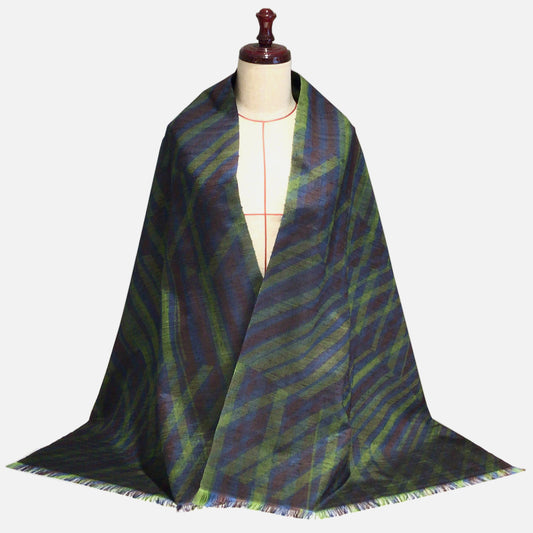 Sold out
Sold outMeisen Stole Seijima (Blue/Green)
Regular price $217.00 USDRegular priceUnit price / per$217.00 USDSale price $217.00 USDSold out -
Meisen Stole Half Moon Kasane (Pink Purple Black)
Regular price $195.00 USDRegular priceUnit price / per$195.00 USDSale price $195.00 USDSold out -
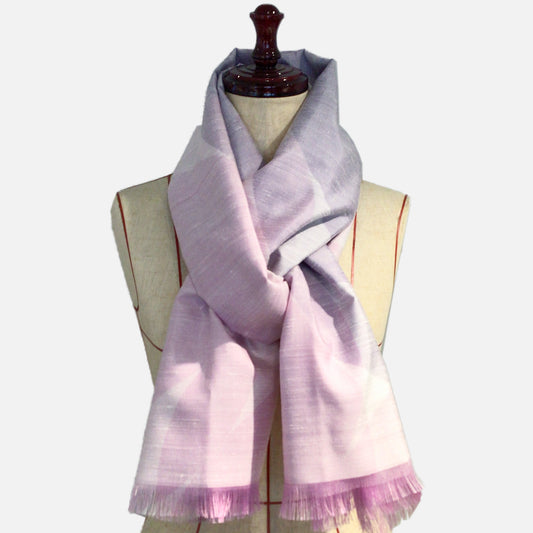
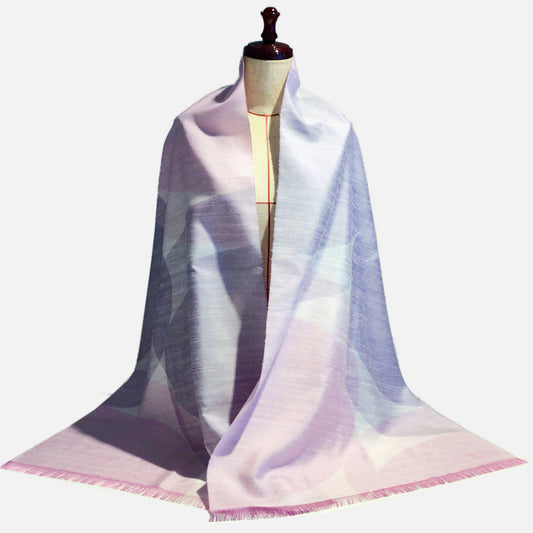 Sold out
Sold outMeisen Stole Half Moon Cap (Pink)
Regular price $195.00 USDRegular priceUnit price / per$195.00 USDSale price $195.00 USDSold out -
Meisen Stole Half Moon Kasane (Dark Blue Brown)
Regular price $195.00 USDRegular priceUnit price / per$195.00 USDSale price $195.00 USDSold out -
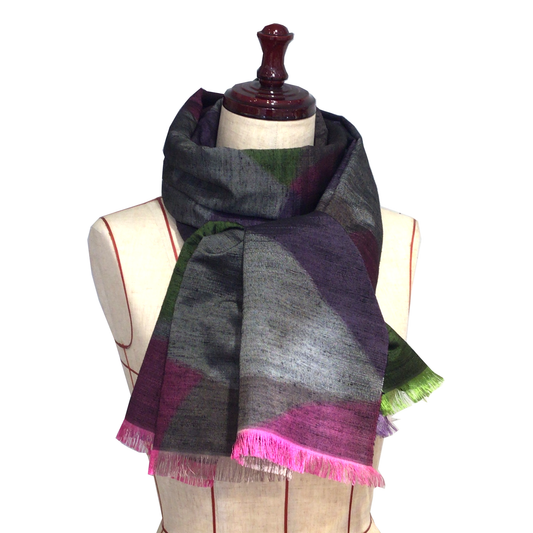
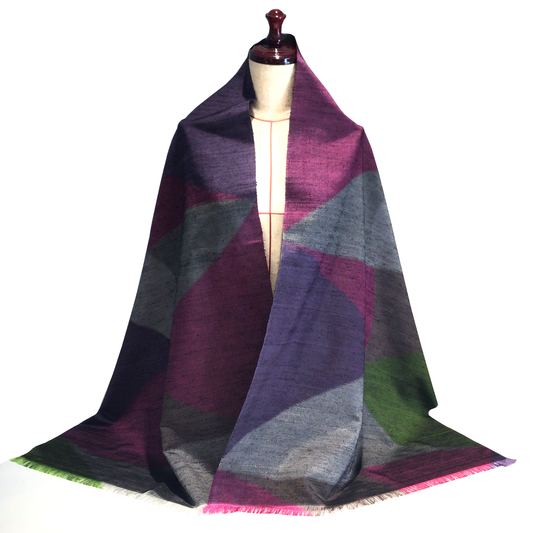 Sold out
Sold outMeisen Stole Variable Lattice (Pink)
Regular price $217.00 USDRegular priceUnit price / per$217.00 USDSale price $217.00 USDSold out -
Meisen Stole Variable Lattice (Pink) Silk Linen
Regular price $181.00 USDRegular priceUnit price / per$181.00 USDSale price $181.00 USDSold out -

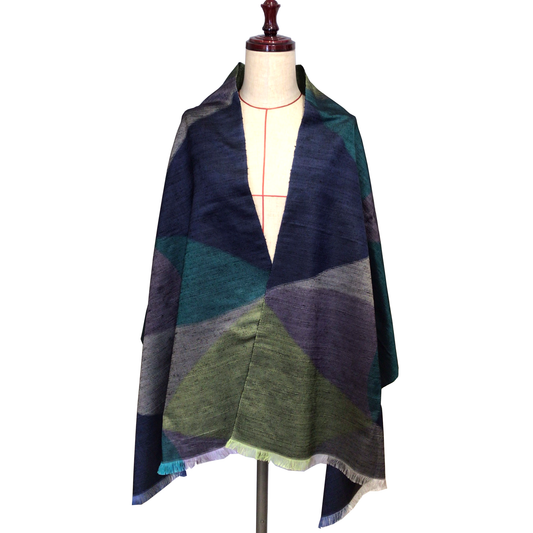 Sold out
Sold outMeisen Stole Variable Lattice (Blue)
Regular price $217.00 USDRegular priceUnit price / per$217.00 USDSale price $217.00 USDSold out -
Meisen Stole Large Tsurubotan (Purple Pink)
Regular price $195.00 USDRegular priceUnit price / per$195.00 USDSale price $195.00 USDSold out -
Meisen Stole Large Tsurubotan (Blue Green)
Regular price $195.00 USDRegular priceUnit price / per$195.00 USDSale price $195.00 USDSold out -
Meisen Stole Forest Pattern (White/Dark Blue)
Regular price $195.00 USDRegular priceUnit price / per$195.00 USDSale price $195.00 USDSold out -
Meisen stall full
Regular price $195.00 USDRegular priceUnit price / per -

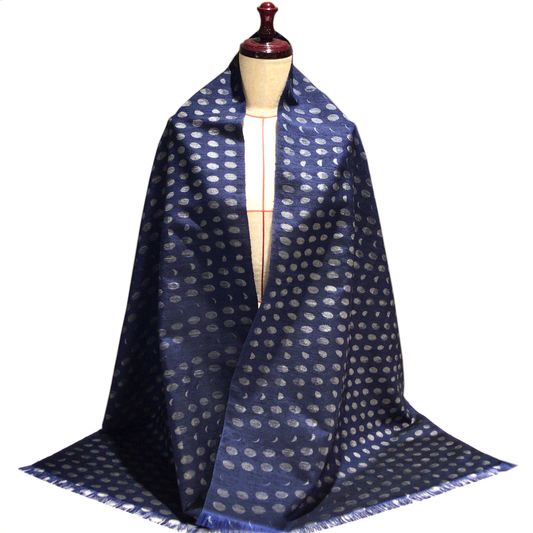 Sold out
Sold outMeisen Stole Filled Navy Blue
Regular price $195.00 USDRegular priceUnit price / per$195.00 USDSale price $195.00 USDSold out -
Meisen Stole Meisen Peony (Navy Blue)
Regular price $195.00 USDRegular priceUnit price / per$195.00 USDSale price $195.00 USD -
Meisen Stole Meisen Peony (Pink)
Regular price $195.00 USDRegular priceUnit price / per$195.00 USDSale price $195.00 USD
































